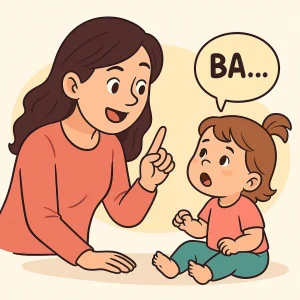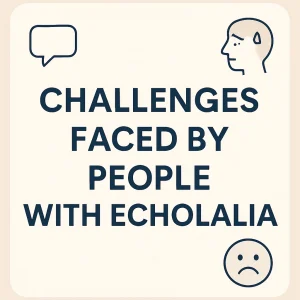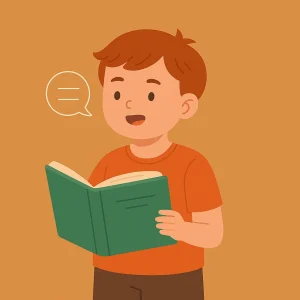Effective Interventions for Adult Communication Disorders
By Rajini D
Last Updated: May 22, 2024
Adult Communication Disorders can significantly impact individuals’ ability to express themselves and interact with others. These disorders often arise from neurological conditions, injuries, or diseases that affect speech production, language comprehension, swallowing, and cognitive communication. This comprehensive guide provides an overview of disorders affecting speech clarity, language clarity, and swallowing and focuses on interventions to help adult communication disorders regain their communication skills and improve their quality of life. Speech-language pathologists are critical in diagnosing and treating these disorders, employing targeted strategies to enhance communication abilities.
Enhancing Speech Clarity in Adult Communication Disorders
Disorders Affecting Speech Clarity
Several adult communication disorders can impair speech clarity:
- Apraxia of Speech (AOS): A motor speech disorder characterized by difficulties in planning and coordinating the movements needed for speech. Individuals with AOS often experience inconsistent speech errors and may struggle more with longer or complex words.
- Dysarthria: A motor speech disorder resulting from muscle weakness, affecting the muscles used for speech production. Symptoms include slurred or slow speech, difficulty moving the tongue or facial muscles, and abnormal speech rhythm and intonation.
- Voice Disorders: Conditions affecting the pitch, volume, or quality of the voice, such as vocal fold nodules, polyps, cysts, or laryngeal cancer. Symptoms can include hoarseness, loss of voice, and a strained or breathy voice.
Interventions for Enhancing Speech Clarity
- Articulation Exercises: Targeted exercises improve the precision of speech sounds, enhancing word clarity. Techniques may include repetitive practice of specific sounds, words, and phrases. These exercises focus on strengthening the tongue, lips, and jaw muscles to produce clearer speech sounds.
- Breath Support and Control: Breathing techniques to strengthen respiratory support, ensuring louder and clearer speech. Diaphragmatic breathing and exercises to control exhalation can help maintain steady airflow, which is crucial for sustained speech.
- Oral Motor Exercises: Exercises improve the strength and coordination of the muscles involved in speech. This can include tongue exercises, lip stretches, and jaw movements. These activities enhance the motor control necessary for precise articulation.
- Voice Therapy: Techniques to improve vocal quality, such as practicing proper vocal hygiene, using appropriate pitch and volume, and reducing vocal strain. Voice therapy may involve exercises to relax the vocal cords, improve resonance, and increase vocal endurance.
Boosting Language Skills in Adult Communication Disorders
Disorders Affecting Language Clarity
Language clarity can be impacted by various adult communication disorders:
- Aphasia: A language disorder typically caused by a stroke or brain injury, affecting speaking, understanding, reading, and writing skills. Individuals with aphasia may have difficulty finding words, forming sentences, or comprehending spoken or written language.
- Cognitive-Communication Disorders: Resulting from conditions like dementia or traumatic brain injury, these disorders impact the ability to use language effectively due to cognitive impairments. Symptoms can include problems with memory, attention, problem-solving, and social communication skills.
Interventions for Enhancing Language Skills
- Improving Comprehension and Expression: Activities designed to boost understanding and verbal expression, such as interactive storytelling, discussing current events, and engaging in conversations. These activities help individuals practice using language in meaningful contexts.
- Enhancing Reading and Writing Abilities: Exercises to maintain and improve reading comprehension and writing skills. This can include reading aloud, summarizing texts, and writing practice through journaling or letter writing. These tasks help reinforce language processing skills and literacy.
- Cognitive Exercises: Tasks to strengthen brain processing abilities, including memory games, problem-solving activities, and sequencing exercises. These exercises improve cognitive functions that support effective communication.
- Compensatory Strategies: Techniques to manage communication impairments, such as using communication books, reminder systems, or technology-assisted devices. These strategies provide alternative ways to convey messages and support everyday communication.
Addressing Swallowing Disorders in Adults
Disorders Involving Swallowing Issues
Swallowing disorders, or dysphagia, can occur in adults due to several conditions:
- Neurological Conditions: Including Parkinson’s disease, multiple sclerosis, and stroke. These conditions can affect the muscles and nerves involved in swallowing.
- Structural Abnormalities: Resulting from oral or laryngeal cancer treatments or surgeries. These abnormalities can alter the anatomy and function of the swallowing mechanism.
Interventions for Managing Swallowing Disorders
1. Strengthening Exercises: Exercises targeting the mouth, throat, and neck muscles to enhance swallowing safety and efficiency. These exercises can include tongue-strengthening exercises, effortful swallowing, and Mendelsohn maneuvers to improve muscle coordination.
2. Food Modifications: Adjust the consistency of foods and liquids to prevent choking and aspiration. This can involve thickening liquids or preparing softer foods with modified diets tailored to the individual’s swallowing capabilities. Speech-language pathologists often collaborate with dietitians to create meal plans that ensure safety and nutritional adequacy.
3. Positioning Techniques: Teaching proper head and body positioning during meals to facilitate smoother and safer swallowing. Techniques such as chin tuck, head turn, or sitting upright can help direct the food bolus effectively and reduce the risk of aspiration.
4. Swallowing Techniques: Strategies to improve the coordination of swallowing muscles, such as the supraglottic swallow or Mendelsohn maneuver, aim to protect the airway and enhance swallowing efficiency. These techniques are practiced under the guidance of a speech-language pathologist to ensure correct implementation.
Read More: Oral motor Exercises: Key to Better Speech
Managing Cognitive Communication Challenges
Understanding Cognitive Communication Disorders
Cognitive communication disorders arise from cognitive impairments affecting communication. Common causes include:
- Dementia: Progressive decline in memory and cognitive function, impacting language and communication. Individuals may experience difficulty finding words, following conversations, and understanding complex language.
- Traumatic Brain Injury (TBI): Cognitive and communication impairments following brain injury. Symptoms can range from mild memory issues to severe cognitive deficits affecting all aspects of communication.
- Right Hemisphere Brain Injury: Affects pragmatics, nonverbal cues, and topic maintenance. Individuals may struggle with understanding abstract language, interpreting nonverbal cues, and maintaining coherent conversations.
Interventions for Cognitive Communication Challenges
- Cognitive Exercises: Designed to improve attention, memory, and problem-solving skills. Activities may include card-matching games, sequencing tasks, and narrative storytelling, enhancing cognitive functions that support effective communication.
- Compensatory Strategies: Techniques to assist with daily communication, such as using visual aids, simplified language, and non-verbal cues. These strategies help individuals navigate cognitive deficits and improve their ability to communicate.
- Pragmatic Language Therapy: Focuses on improving social communication skills, understanding nonverbal cues, and maintaining conversation topics. Therapy may involve role-playing, conversational practice, and social skills training.
- Cognitive Rehabilitation: Tailored interventions to address specific cognitive deficits, enhancing overall communication abilities. This may include memory training, executive function exercises, and strategies to improve attention and processing speed.
Conclusion
Understanding and addressing speech and language disorders in adults require early diagnosis and targeted intervention. Speech-language pathologists play a critical role in providing effective treatments, enabling individuals to regain their communication skills and improve their quality of life. Through dedicated therapy, patients can achieve significant improvements, enhancing their ability to participate fully in daily activities. If you or a loved one are experiencing communication challenges, reach out to a qualified speech therapist to explore personalized treatment options. Effective interventions can make a substantial difference, helping to restore clarity, confidence, and connection in communication.
Frequently Asked Questions
1. What is Apraxia of Speech, and how is it treated?
Apraxia of Speech (AOS) is a motor speech disorder characterized by difficulty planning and coordinating the movements needed for speech. Treatment typically involves intensive speech therapy focusing on repetition and practice, using multisensory approaches to enhance learning and retention.
2. How does dysarthria affect speech, and what interventions are effective?
Dysarthria is a motor speech disorder resulting from muscle weakness, leading to slurred or slow speech. Interventions include speech therapy exercises to improve muscle strength and coordination, breath support techniques, and, in severe cases, the use of augmentative and alternative communication (AAC) devices.
3. What are common causes of voice disorders and their treatments?
Voice disorders can be caused by vocal fold nodules, polyps, cysts, or laryngeal cancer. Treatments include voice therapy to teach proper vocal techniques and reduce strain, and in cases of structural abnormalities, medical or surgical interventions may be necessary.
4. How does aphasia affect language skills and what are the treatment options?
Aphasia affects the ability to speak, understand, read, and write, typically due to a stroke or brain injury. Treatment involves speech and language therapy to improve communication skills, using exercises to enhance comprehension and expression, and compensatory strategies to manage communication impairments.
5. What are cognitive-communication disorders and how are they managed?
Cognitive-communication disorders result from cognitive impairments due to conditions like dementia or traumatic brain injury, affecting language use. Management includes cognitive exercises to improve brain processing abilities, compensatory strategies for daily communication, and cognitive rehabilitation to address specific deficits.
6. What is dysphagia and how is it treated?
Dysphagia is a swallowing disorder that can result from neurological conditions or structural abnormalities. Treatment includes strengthening exercises for swallowing muscles, food modifications to ensure safe swallowing, positioning techniques during meals, and swallowing strategies to improve coordination.
7. How can cognitive-communication challenges be addressed in adults?
Cognitive communication challenges can be managed with cognitive exercises to improve attention and memory, compensatory strategies to assist with daily communication, pragmatic language therapy for social communication skills, and cognitive rehabilitation for specific cognitive deficits.
8. What role do speech-language pathologists play in treating communication disorders?
Speech-language pathologists diagnose and treat communication disorders, developing personalized intervention plans to address speech clarity, language skills, swallowing issues, and cognitive communication challenges, helping individuals improve their communication abilities and quality of life.
9. Can technology assist in managing communication disorders?
Yes, technology can be very helpful. AAC devices, speech-generating devices, and communication apps can support individuals with severe communication impairments by providing alternative ways to express themselves.
10. What are some practical tips for supporting a loved one with a communication disorder?
Be patient and give them time to express themselves.
About the Author:
Rajini Darugupally
M.Sc., Speech-Language Pathologist (9+ years of experience)
Rajini is a passionate and dedicated Speech-Language Pathologist with over 9+ years of experience, specializing in both developmental speech and language disorders in children and rehabilitation in adults. Driven by a desire to empower each individual to find their voice, Rajini brings a wealth of experience and a warm, genuine approach to therapy.
At Wellness Hub, she thrives in a team environment that values innovation, compassion, and achieving results for their clients.
Connect with Rajini to learn more about how she can help you or your loved one find their voice.
Book your Free Consultation Today
Parent/Caregiver Info:
Client’s Details:
* Error Message









